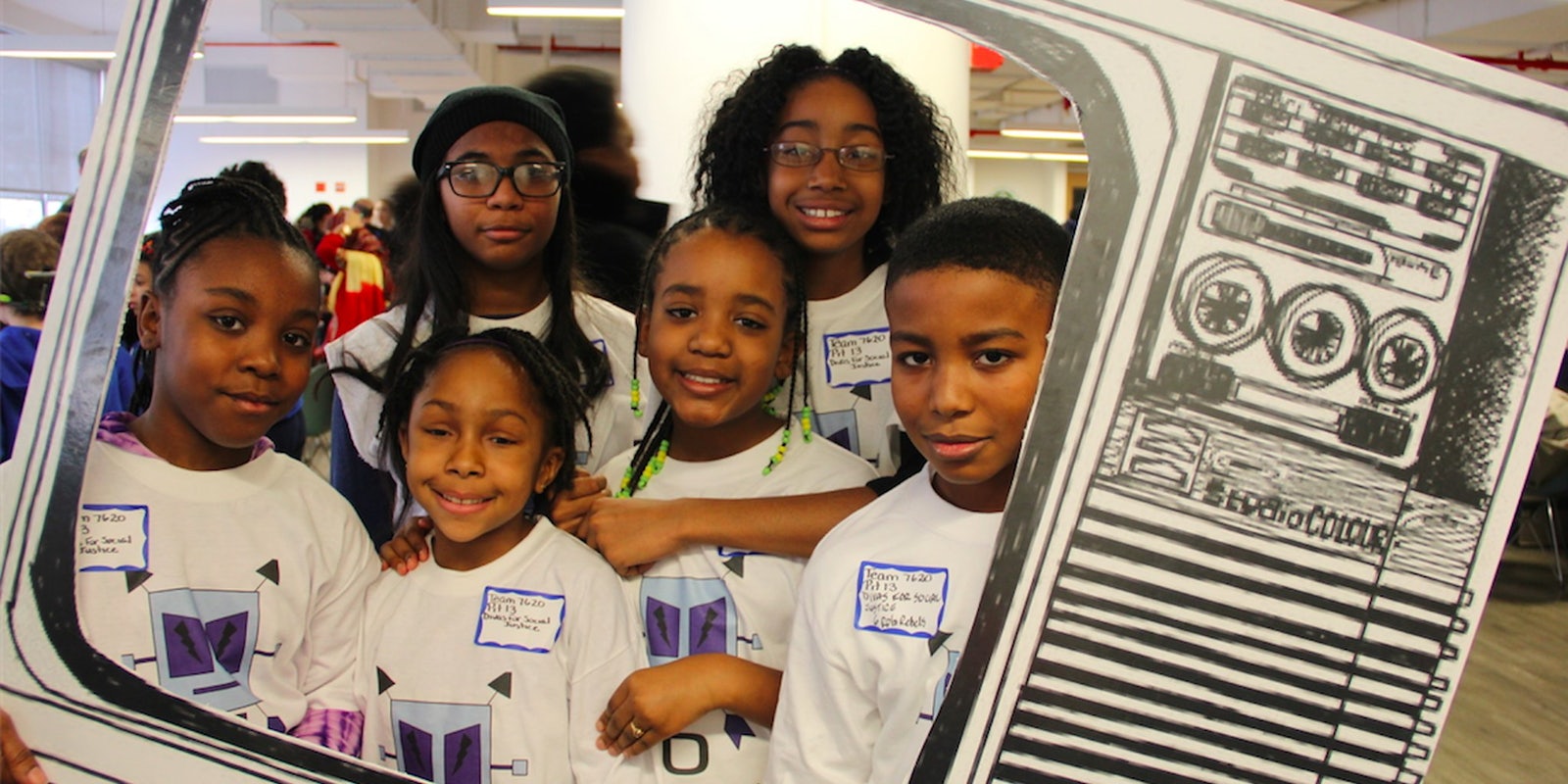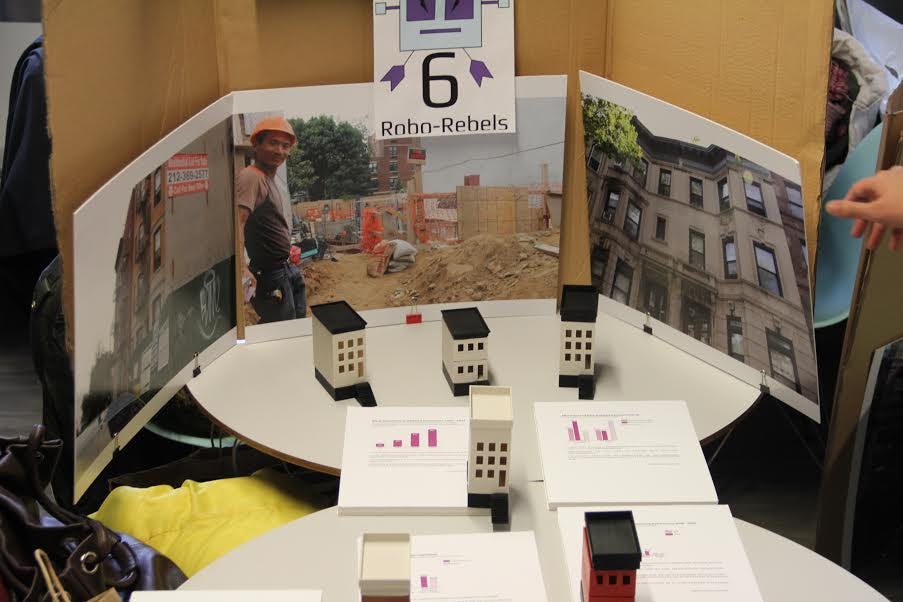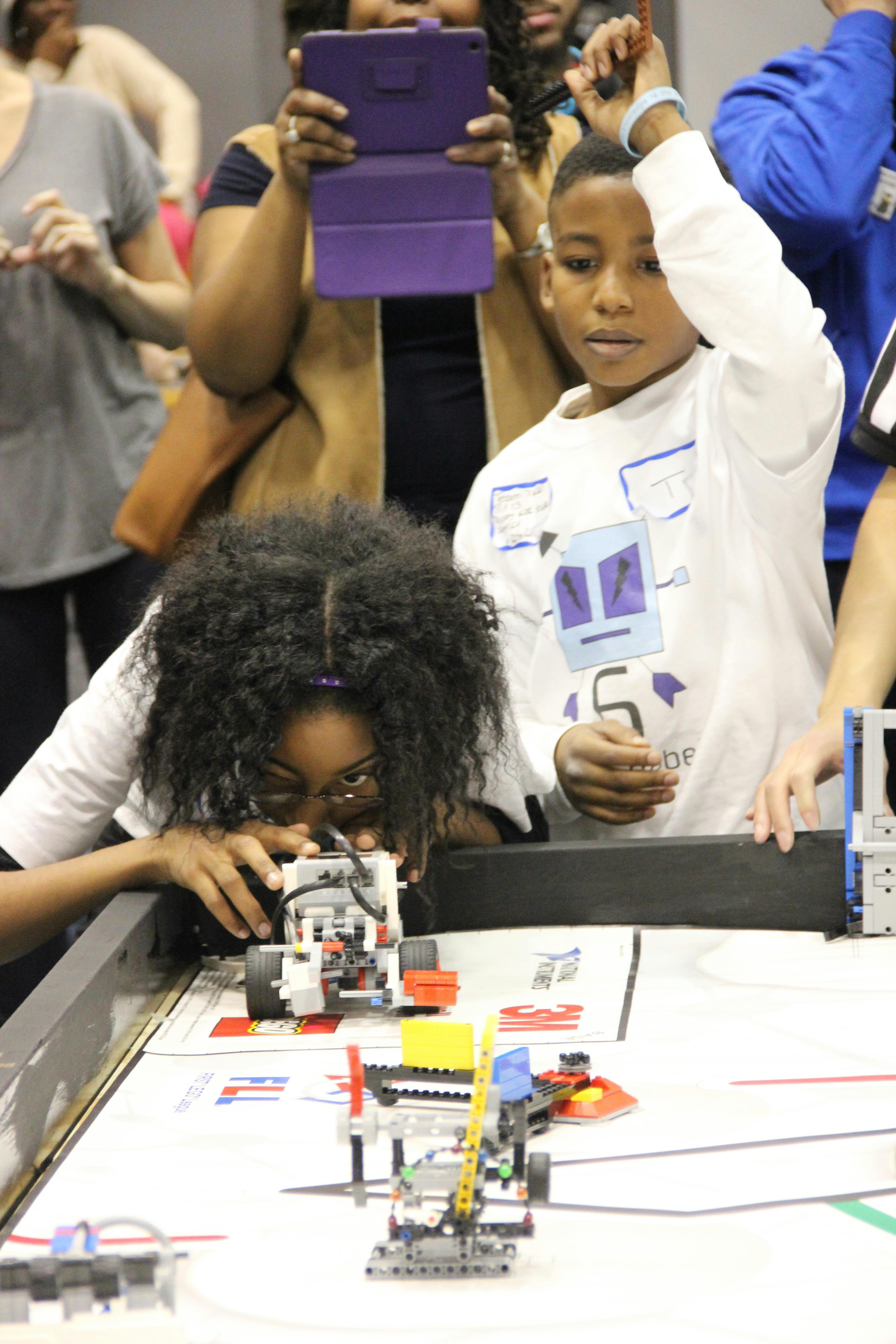Clarisa James has elevated education in Brooklyn. Her program gives students access to science, technology, engineering, arts, and math. While many programs might do the same, her’s has a singular focus: to use these skills to focus on improving their neighborhoods through technology. And now they’ve got a new award to show off.
James’ organization, DIVAS (Digital Interactive Visual Arts and Sciences) For Social Justice, wants to empower youth in underserved New York communities by teaching computing and media literacy to kids in elementary and middle school. DIVAS, founded in 2008, does this by helping them tackle issues students might face in the real world.
The group’s latest project centers on gentrification, particularly in the Bedford-Stuyvesant area of Brooklyn.
“We were curious to know if they understand all the changes that are happening in the community all of a sudden,” James said in an interview with the Daily Dot. “We had them read articles, look at statistics of the community, and we asked them what solutions they would provide for displacement: ‘If you were to explain gentrification to someone your age, how would you explain it?’”
Brooklyn gentrification has led to the displacement of a growing number of low-income families as wealthier residents move into the neighborhoods. Particularly in Bedford-Stuyvesant, where median home prices have doubled in the last four years.
To understand gentrification, students built a model of their neighborhood using a 3D printer, and set up the replica brownstones and buildings around a map of the Bedford-Stuyvesant neighborhood. Students suggested affordable housing could be built in areas where families were getting displaced, and said putting up a community garden in an abandoned space that remains empty and lifeless could improve the area.
“Bed-Stuy is known for having a lot of block parties, and the kids decided to create community tables so that there could be community dinners,” James said. “So anyone could have them, and spark conversation.”
The team of six students from DIVAS for Social Justice took their gentrification project to the First Lego Robotics Competition this month, themed “How do you learn in the 21st century?”
The team used their 3D-printed community to demonstrate the changing landscape, and built a Lego robot to clean up the “trash” in the abandoned spaces. The group of five girls and one boy took home first prize, and are headed to the next competition taking place March 14.
It’s not only city planning issues the children are tackling, however. The students also create mobile applications and interactive tools to recognize and quantify social issues.
The group created “My Sister’s Keeper App,” an iOS application that lets younger girls ask questions of peers and mentors, and receive answers in return. “How do I deal with toxic relationships?” and “How do I love myself?” are just two examples.
DIVAS for Social Justice also worked with the Partnership for a Healthier New York City to figure out how many alcohol advertisements were displayed in a five-block radius among students’ homes in Brooklyn, and cross-referenced that with youth binge-drinking data provided with the Center for Disease Control. The group visualized the data on an interactive map.
As interest increases, the group is expanding across New York, including into an after school program for social change in Queens. While it started as a learning group for girls, it’s since expanded to include boys, too.
“Once we started doing robotics especially and getting involved in programming, we don’t want to shut out the boys,” James said. “The community that we were based in, there are no programs like ours. So we didn’t want to exclude them.”
Young people aren’t the only ones who will be able to benefit from the DIVAS for Social Justice Program. In the spring, James is starting a group called Digital Intergenerational Bridges where students can come with any older relative to learn about technology.
“We’re teaching 3D-printing, robotics, coding, digital media, but they’re all focused in on a social action project,” James said. “We are first and foremost a social justice organization.”
Photos by Clarisa James, DIVAS for Social Justice




